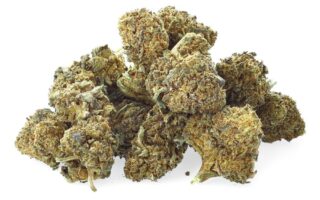In the ever-evolving landscape of medicine, few topics spark as much intrigue and discussion as medical cannabis. Once relegated to the shadows of stigma and prohibition, cannabis has emerged into the light as a legitimate therapeutic option for a variety of ailments. With a rich history that dates back thousands of years, its application in modern medicine is gaining momentum as ongoing research continues to unveil its potential benefits. From chronic pain relief to the management of neurological disorders, the versatility of this remarkable plant is becoming increasingly evident. This article delves into the multifaceted uses of medical cannabis, exploring its role in contemporary healthcare, the scientific underpinnings of its efficacy, and the stories of those who have found solace amid its leaves. Join us on this journey through the world of medical cannabis, where we unravel the complexities, insights, and possibilities that this natural remedy holds for patients and practitioners alike.
Table of Contents
- Exploring the Therapeutic Benefits of Medical Cannabis in Chronic Pain Management
- Understanding the Role of Medical Cannabis in Mental Health Treatment
- Navigating the Legal Landscape and Patient Access to Medical Cannabis
- Innovative Research and Future Directions for Medical Cannabis Applications
- Q&A
- Final Thoughts
Exploring the Therapeutic Benefits of Medical Cannabis in Chronic Pain Management
Chronic pain can often be a relentless barrier to daily life, leading many individuals to search for effective relief. Medical cannabis has emerged as a promising alternative, offering various therapeutic benefits that go beyond traditional pain management methods. Cannabinoids, the active compounds in medical cannabis, interact with the body’s endocannabinoid system, which plays a crucial role in regulating pain perception. Studies have shown that cannabidiol (CBD) and tetrahydrocannabinol (THC) can work synergistically to reduce inflammation, improve sleep quality, and alleviate discomfort, providing patients with a holistic approach to pain relief.
Moreover, the versatility of medical cannabis allows for different methods of consumption, catering to individual preferences and medical needs. Patients can choose from options such as oils, edibles, topicals, or vaporization, each offering unique onset times and lasting effects. The ability to customize dosages allows users to find the most effective regimen for their specific conditions. Below is a brief overview of the various methods and their potential benefits:
| Consumption Method | Benefits |
|---|---|
| Oils | Rapid absorption, easy dosage adjustment |
| Edibles | Long-lasting effects, discreet consumption |
| Topicals | Localized relief, minimal psychoactive effects |
| Vaporization | Quick onset, less harmful than smoking |
Understanding the Role of Medical Cannabis in Mental Health Treatment
The exploration of medical cannabis in the realm of mental health treatment has gained significant traction in recent years, prompting both scientific inquiry and patient interest. Advocates argue that certain compounds found in cannabis, particularly cannabinoids like THC and CBD, may offer therapeutic benefits that traditional psychiatric medications sometimes fail to provide. These compounds interact with the endocannabinoid system, a complex network involved in regulating mood, anxiety, and stress response, potentially paving the way for alternative treatment options that are natural and less prone to side effects.
Research suggests that medical cannabis may be beneficial for various mental health conditions, including:
- Anxiety Disorders: Many patients report a reduction in anxiety symptoms when using specific cannabis strains.
- Post-Traumatic Stress Disorder (PTSD): Cannabis may help alleviate flashbacks and improve overall emotional regulation.
- Depression: Some studies indicate that cannabinoids might elevate mood and increase overall well-being.
- Insomnia: Cannabis can improve sleep quality, which is often disrupted in individuals with mental health disorders.
However, it is crucial for patients to approach medical cannabis with caution and consult healthcare providers before initiating treatment. The dosage, strain, and method of consumption can all significantly impact the outcomes. To aid in understanding these nuances, the following table summarizes key cannabinoids and their potential mental health applications:
| Cannabinoid | Potential Use |
|---|---|
| THC | May reduce anxiety and improve sleep. |
| CBD | Potentially alleviates symptoms of anxiety, depression, and PTSD. |
| CBC | Research suggests it may aid in pain relief and anti-anxiety effects. |
| CBG | Emerging evidence indicates possible antidepressant effects. |
Navigating the Legal Landscape and Patient Access to Medical Cannabis
As the acceptance of medical cannabis broadens, the legal framework governing its use varies significantly across regions. Understanding these laws is crucial for patients seeking access to cannabis as a treatment option. Various states and countries have implemented regulations that classify cannabis into different categories, often based on its THC content and medicinal properties. The complexities can lead to confusion, making it important for patients to stay informed on:
- State-specific regulations: Each state may have different qualifying conditions, possession limits, and available forms of cannabis.
- Doctor recommendations: Medical cannabis usually requires a physician’s endorsement, often involving formal evaluations.
- Dispensary licensing: Only licensed dispensaries are authorized to sell medical cannabis, which affects availability and product quality.
Another important aspect of navigating the legal landscape is understanding the pathways available for obtaining medical cannabis. Depending on the jurisdiction, patients may need to complete specific steps to access their medication. Below is a simplified overview of typical requirements:
| Step | Description |
|---|---|
| Consultation | Meet with a healthcare provider to discuss eligibility and treatment options. |
| Application | Submit a formal application to the state cannabis board or health department. |
| Approval | Receive a medical cannabis card, granting legal access to dispensaries. |
Innovative Research and Future Directions for Medical Cannabis Applications
As advancements in the understanding of the endocannabinoid system continue to unfold, researchers are exploring novel applications for medical cannabis that extend beyond traditional uses. Studies are focusing on its potential role in managing complex neurological conditions such as Alzheimer’s disease and multiple sclerosis. Preliminary findings suggest that cannabinoids may help reduce neuroinflammation and promote neuroprotection, opening pathways for future therapies. Other areas of investigation include the application of cannabis in pediatric medicine, particularly for conditions like epilepsy and autism, where anecdotal evidence has shown promising results in mitigating symptoms.
Looking ahead, it’s crucial to integrate multidisciplinary approaches in the research of medical cannabis. Collaborative efforts involving pharmacologists, clinicians, and botanists could yield innovative delivery mechanisms, such as nanoparticle formulations or transdermal patches, which enhance bioavailability and patient compliance. Furthermore, the exploration of tailored treatment regimens, based on individual genetic profiles and environmental factors, holds the potential for personalized medicine in cannabis application. A dynamic landscape of ongoing clinical trials and research initiatives is paving the way for a new era in which medical cannabis may evolve into a foundational component of modern therapeutic protocols.
Q&A
Q&A: Unpacking Medical Cannabis Uses
Q1: What is medical cannabis, and how does it differ from recreational cannabis?
A1: Medical cannabis refers to the use of the cannabis plant or its extracts to treat specific medical conditions or symptoms. Unlike recreational cannabis, which is primarily used for enjoyment and relaxation, medical cannabis is prescribed by healthcare professionals to alleviate pain, manage chronic conditions, or improve the quality of life for patients with various ailments.
Q2: What medical conditions can benefit from cannabis treatment?
A2: Research indicates that medical cannabis can be beneficial for a range of conditions, including chronic pain, multiple sclerosis, epilepsy, nausea (especially from chemotherapy), Crohn’s disease, and PTSD, among others. Each patient’s experience can vary, and it’s essential to consult a healthcare provider to evaluate the potential benefits and risks.
Q3: How does cannabis work in the body to alleviate symptoms?
A3: Cannabis contains active compounds known as cannabinoids, the most notable being THC (tetrahydrocannabinol) and CBD (cannabidiol). These compounds interact with the body’s endocannabinoid system, a complex network of receptors and neurotransmitters that help regulate various physiological processes, including pain, mood, appetite, and immune response. By binding to these receptors, cannabinoids can help modulate symptoms and promote healing.
Q4: What are the forms in which medical cannabis can be consumed?
A4: Medical cannabis comes in various forms to cater to different patient needs. Common consumption methods include oils and tinctures, capsules, edibles, vaporized products, and topical creams. Each form has its own onset time and duration of effects, allowing patients to choose options that best suit their lifestyle and medical requirements.
Q5: Are there any side effects associated with medical cannabis use?
A5: Like any form of treatment, medical cannabis may have side effects. Commonly reported effects include dizziness, dry mouth, fatigue, and changes in appetite. Additionally, the psychoactive effects of THC can lead to mental fog or anxiety in some users. It’s crucial that patients discuss potential side effects with their healthcare provider to ensure the benefits outweigh any risks.
Q6: Is medical cannabis legal everywhere?
A6: The legal status of medical cannabis varies widely around the world and even within regions of the same country. While many places have recognized its medicinal value and legalized its use, others still classify it as an illegal substance. Patients should familiarize themselves with local laws and regulations before seeking medical cannabis as a treatment option.
Q7: How can a patient access medical cannabis?
A7: In most jurisdictions where medical cannabis is legal, patients must obtain a recommendation from a qualified healthcare provider. This often involves discussing their medical history and current health conditions. Following this, patients may need to register with a medical cannabis program or obtain a medical cannabis card, which allows them to purchase products from licensed dispensaries.
Q8: What does the future hold for medical cannabis research?
A8: The future of medical cannabis research looks promising, with ongoing studies examining its efficacy for various conditions. As societal norms shift and more states and countries legalize its use, researchers are expected to conduct larger, more comprehensive clinical trials to fully understand its benefits, potential applications, and long-term effects, thus leading to more informed medical practices and policies.
Q9: How can patients ensure they are using medical cannabis safely?
A9: To use medical cannabis safely, patients should start with a low dosage, monitor their responses carefully, and communicate openly with their healthcare provider. It’s important to obtain cannabis from reputable dispensaries that provide lab-tested products. Continuous education about both the benefits and risks of medical cannabis is key to safe and effective use.
This Q&A serves as a guide for those curious about the roles and responsibilities associated with medical cannabis, underscoring the importance of informed discussions with healthcare professionals.
Final Thoughts
As we navigate the evolving landscape of medical cannabis, it becomes increasingly clear that its potential extends far beyond the stereotypical perceptions often associated with it. From chronic pain management to alleviating symptoms of anxiety and nausea, medical cannabis is carving a distinct niche within the realm of modern medicine. Yet, the complexity of cannabinoids and their interactions with the human body calls for ongoing research and a nuanced understanding. As we close this exploration into the uses of medical cannabis, it is vital to advocate for informed discussions and continued studies aimed at unlocking its full therapeutic promise. The journey is just beginning, and with open minds and careful scrutiny, we can embrace the potential of medical cannabis while remaining grounded in scientific integrity. Whether you are a patient, caregiver, or merely curious, the evolving narrative around medical cannabis invites us all to participate in shaping a future where alternative therapies are respected, understood, and integrated into holistic health practices.


